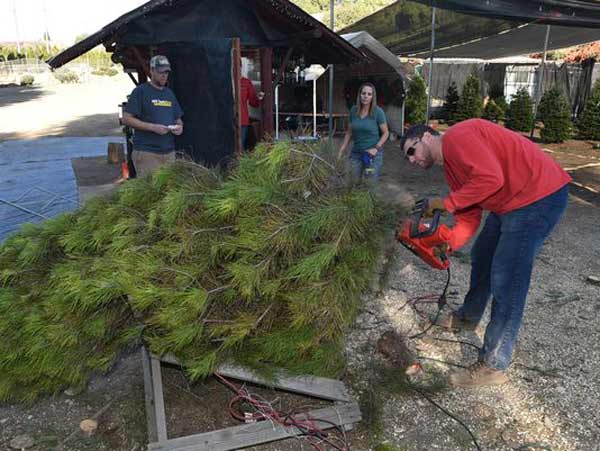
New York, US (BBN) - Artificial grass has major environmental advantages over real grass, so some may be surprised to hear that artificial Christmas trees are generally considered harsher on the environment than natural, cut Christmas trees.
Although artificial trees are reused year after year, artificial trees do not “save” trees from being cut in a natural forest, reports Venture County Star.
According to the National Christmas Tree Association, nearly all natural Christmas trees are grown like crops on “tree farms,” frequently on marginal soil not normally suitable for other types of trees.
Market demand for Christmas trees caused these trees to be planted in the first place.
Natural Christmas trees also have a role in preserving open space.
Marilyn Cameron, who has been operating Christmas Ranch Tree Farms since 1971, farms two growing sites, one in Simi Valley and the other in Thousand Oaks.
Cameron’s farms make productive use of land under power lines.
Other tree farms in open space and on agricultural land make preservation of urban boundaries more viable, maintaining attractive vistas between areas of development.
Of course, most locally sold trees are likely to be cut from one of the 42,000 acres of tree farms in Oregon, according to the website of the Pacific Northwest Christmas Tree Association.
Therefore, natural trees do have a carbon emissions footprint due to transportation.
However, artificial trees are usually manufactured in Asia, so they travel even greater distances.
Moreover, natural trees sequester carbon, locking a greenhouse gas into their cell structure and producing oxygen.
Petroleum is also used to farm natural trees; however, the plastic used in artificial trees usually includes polyvinyl chloride (PVC).
Concerns about PVC are analyzed in an October 2006 research paper produced under contract by the California Environmental Protection Agency, Office of Environmental Health Hazard Assessment.
This report, “Issues Health Concerns and Environmental with PVC-Containing Building Materials in Green Buildings,” notes: “There is growing concern regarding the potential human health and environmental impacts of producing, using and disposing of PVC-containing materials” and summarizes (from pages 33 to 39) these concerns.
For rigid PVC, such as that used in water pipes, the “primary concern” identified in the report is the danger to workers during the manufacturing of the product.
However, Christmas trees are made with flexible PVC, introducing another category of concern: Lead and phthalates may be used to improve flexibility and stabilization of PVC.
The European Union’s VinylPlus voluntary commitment program aimed to phase out the use of lead by targeting an 80 percent reduction by 2013, and voluntary efforts are also under way in the United States.
Market demand for safer products also affects phthalates. Ceresana, which describes itself as “the leading market research institute” for the plastics industry, in its Third Edition Market Study on plasticizers (2013), warned “Health concerns of consumers” may lead to “possible further bans on the use of phthalates.”
One website, thesoftlanding.com, provides a list of artificial trees with branch tips made without PVC or lead.
However, the website notes, pre-lit versions of these trees usually still contain PVC, as well as lead and flame retardants.
If you are concerned about PVC and lead, they suggest you sweep or wet mop around your artificial tree to avoid contact with the PVC sloughing off the tree.
More importantly, parents should make sure small children do not put tree parts in their mouth.
The growth of real trees may also involve the use of toxic compounds in fertilizers and pesticides, but some trees are grown in a sustainable manner.
Michael and Karen Karayan, who in 1996 began operating the long-established Mupu Tree Farm retail site on Ojai Road near Santa Paula, display a certification noting their trees come from a Socially and Environmentally Responsible Farm (SERF) in Oregon.
To obtain SERF certification, tree farms develop a sustainability plan promising achievements in five areas: biodiversity; soil and water resources; integrated pest management; health and safety; and community and consumer relations.
Inspections, conducted by the Oregon Agricultural Department, monitor plan compliance and require updates.
Keep your eye on the environment and keep green qualifications in mind when buying your tree.
BBN/MS/ANS